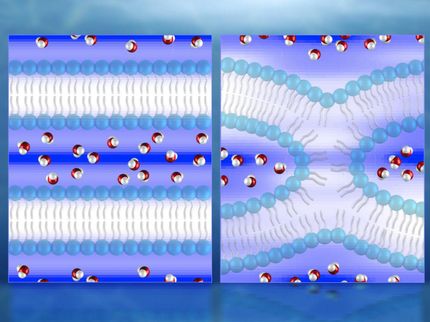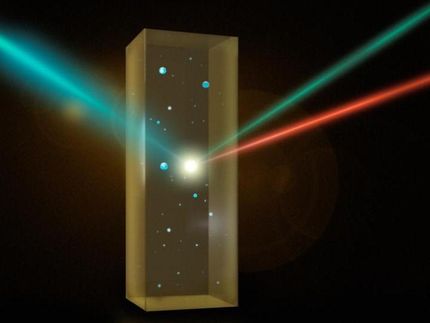Researchers 'cage' water to see it change form
Scientists are using a pioneering method of 'caging' and cooling water molecules to study the change in orientation of the magnetic nuclei at the centre of each hydrogen atom - a process which transforms the molecule from one form of water to another.
By trapping water molecules in carbon spheres and cooling them, scientists at the universities of Southampton, Nottingham and Columbia University in New York, have been able to follow the change in form (or isomer) of the molecules. The results of this work may one day help to enhance the diagnostic power of MRI scans.
Water molecules can exist as one of two isomers, depending on how the spins of their two hydrogen atoms are orientated: ortho, where the nuclear spins are parallel to one another, and para, where the spins are antiparallel.
Scientists believe that any given molecule can transform from ortho- into para- spin states and vice versa, a process known as nuclear spin conversion.
"Currently, mechanisms for this conversion are not completely understood, nor how long it takes the molecules to transform from one spin isomer to the other," said Salvatore Mamone, a post-doctoral physicist at the University of Southampton and lead author on the JCP paper. "To study this, we had to figure out how to reduce the strong intermolecular interactions that are responsible for grouping of molecules and lowering the rotational mobility of the water molecules."
The answer was to isolate the water molecules from one-another by 'caging' them in fullerene (C60, also known as a buckyball) spheres.
Chemical reactions are used to open a hole in the spheres where water molecules can be injected, before the "cages" are closed, to form a complex referred to as H2O@C60. "At the end of this synthetic preparation nicknamed 'molecular surgery,' we find that 70 to 90 percent of the cages are filled, giving us a significant quantity of water molecules to examine," Mamone said. "Because the molecules are kept separate by the cages, there is a large rotational freedom that makes observation of the ortho and para isomers possible."
The fullerene cages prevent water molecules from freezing, meaning that the hydrogen atoms continue to spin and conversion is still able to occur.
In their experiment, the researchers quickly cooled the individual H2O@C60 samples from 50 Kelvin (minus 223 degrees Celsius) to 5 K (minus 268 degrees Celsius) and then monitored their NMR (Nuclear Magnetic Resonance) signal every few minutes over several days.
"As the observed NMR signal is proportional to the amount of ortho-water in the sample (para-water "NMR silent"), we can track the percentages of ortho and para isomers at any time and any temperature," Mamone explained. "At 50 K, we find that 75 percent of the water molecules are ortho, while at 5 K, they become almost 100 percent para. Therefore, we know that after the quick temperature jump, equilibrium is restored by conversion from ortho to paraand we see that conversion in real time."
The research team now plans to study the roles of isomer concentrations and temperature in the conversion process, the conversion of para-water to ortho ('back conversion'), how to detect single ortho- and para-water molecules on surfaces, and spin isomers in other fullerene-caged molecules.
Most read news
Other news from the department science

Get the analytics and lab tech industry in your inbox
By submitting this form you agree that LUMITOS AG will send you the newsletter(s) selected above by email. Your data will not be passed on to third parties. Your data will be stored and processed in accordance with our data protection regulations. LUMITOS may contact you by email for the purpose of advertising or market and opinion surveys. You can revoke your consent at any time without giving reasons to LUMITOS AG, Ernst-Augustin-Str. 2, 12489 Berlin, Germany or by e-mail at revoke@lumitos.com with effect for the future. In addition, each email contains a link to unsubscribe from the corresponding newsletter.





















![[Fe]-hydrogenase catalysis visualized using para-hydrogen-enhanced nuclear magnetic resonance spectroscopy](https://img.chemie.de/Portal/News/675fd46b9b54f_sBuG8s4sS.png?tr=w-712,h-534,cm-extract,x-0,y-16:n-xl)




































